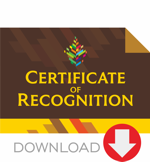Soil Microfauna Diversity of Tasik Ulu Mahmud Riparian in Peatland Forest, Tebing Tinggi Island
Building: Java Heritage Convention
Room: Room II
Date: 2018-11-07 09:30 – 09:45
Last modified: 2019-04-09
Abstract
Peatland forest with its physicochemical properties provides a unique environment for the soil biota. The area surrounding a water body is an interesting natural environment with its soil pH reaching the lowest point of 4.4 which is quite acid for most soil fauna, soil water content of 74-79% providing aqueous habitat, and various plant litter supporting great heterogeneous microhabitat. How diverse the soil microfauna in this particular environment is such an intriguing question to answer. We sampled soil of Tasik Ulu Mahmud riparian to record its protozoan and nematode communities. Three groups of protozoans, Ciliates, Flagellates, and Testate Amoebae inhabited the soil, with total individuals between 1 039 and 3 165 per gram soil. The last group dominated the protozoan community (65-77%). The preliminary community analysis showed more diverse nematodes were observed in the soil of low pH (4-4.5) than in other soil (pH 4.5-6). Ciliates and flagellates were more likely to inhabit acidic habitat with high water content, whereas the tested amoebae seemed to prefer less acidic and low water content soil (CCA: rax-1 0.89, var 0.67; rax-2 0.58, var 0.16). Rotifers, a previously an unaccounted group, showed to inhabit soil with more water content and less acidic. Their abundance in this habitat reached 13-38 individuals/g.
